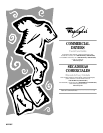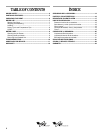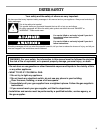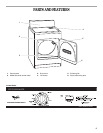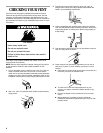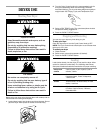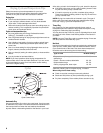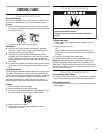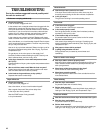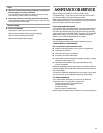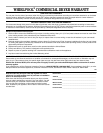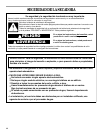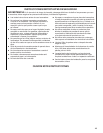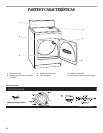
8
Drying, Cycle and Temperature Tips
Select the correct cycle and temperature for your load.
Cool Down tumbles the load without heat during the last few
minutes of all cycles to make the load easier to handle.
Drying tips
■
Follow care label directions when they are available.
■
If you use fabric softener sheets, use only those labeled
“dryer safe.” Follow package instructions.
■
Remove the load from the dryer as soon as tumbling stops, to
reduce wrinkling. This is especially important for permanent
press, knits, and synthetic fabrics.
Cycle and temperature tips
■
Dry most loads using the Energy Preferred Automatic
Setting (
*
), if available on your dryer.
■
Use a High heat setting for drying heavyweight items such as
towels and work clothes.
■
Use a Medium heat setting for drying medium weight items,
such as sheets, underwear, permanent press fabrics, and
some knits.
■
Use a Low heat setting for drying lightweight items such as
lingerie, blouses, dresses, and some knits.
■
Use a no-heat (air) setting for rubber, plastic, or heat-sensitive
fabrics.
■
Line dry bonded or laminated fabrics.
NOTE:
If you have questions about drying temperatures for
various loads, refer to the care label directions. If you are unsure
of the temperature to select for a load, select a lower setting
rather than a higher setting.
Cycles
Cycle Control knob
Automatic Dry
Use your Automatic Dry cycle to dry most loads. Your dryer uses
an Automatic Dry control. The control senses the moisture level in
the load and shuts off when the load reaches the selected
dryness. Select a heat setting based on the fabrics in your load.
After drying a load in the Automatic Dry cycle, check the dryness.
■
If the load is drier than you like, select a setting closer to Less
Dry the next time you dry a similar load.
■
If a load is not as dry as you like, complete drying using a
Timed cycle. Select a setting closer to Very Dry the next time
you dry a similar load.
NOTE:
Drying time varies with an Automatic cycle. The type of
fabric, size of the load, and the dryness selected affect drying
time. See “Drying, Cycle and Temperature Tips.”
Timed Dry
Use Timed Dry for heavyweight and bulky items, such as
bedspreads and work clothes or large loads that require a long
drying time. Select the High heat setting.
You may also use the Timed Dry cycle for lightweight items such
as lingerie or knits. Select a heat setting based on the fabrics in
your load.
NOTE:
Use your Timed Dry cycle to complete drying if items are
still damp after the Automatic Dry cycle.
No Heat
Use the No Heat setting for items that require drying without heat
such as foam, rubber, plastic and heat sensitive fabrics. Set the
Cycle Control knob to No Heat. This chart shows examples of
items that can be dried using the No Heat setting.
*(Minutes). Reset cycle to complete drying, if needed.
When using the No Heat setting
■
Check to see that coverings are securely stitched.
■
Shake and fluff pillows by hand periodically during cycle.
■
Dry item completely. Foam rubber pillows are slow to dry.
Type of Load No Heat setting*
Foam rubber - pillows, padded bras,
stuffed toys
Plastic - Shower curtains, tablecloths
Rubber-backed rugs
Olefin, polypropylene, sheer nylon
20 - 30
20 - 30
40 - 50
10 - 20



